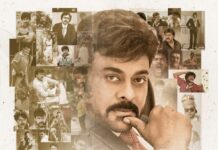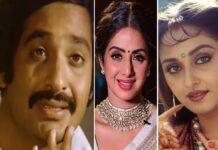
Adurhi Subbarao was born on December 16, 1912 in Rajahmundry. His father Satyanarayanagaaruwas a tahsildar. From the beginning, Adurti was very sharp, and he passed his matriculation by the age of 14; he had to get special permission to write the exam! His father got him a seat for P.U.C. (Intermediate), in Kakinada College, with an exemption letter too.
In the second year, however, he got ill and came back to his native village. After he recovered from his illness, his father rejoined him in his second year, at Rajahmundry this time. Adurthi was however more interested in films & the camera thrilled him. He sought his father’s approval to join a photography course in Mumbai, but his father was against it. Finally, his father parted Adurti’s share in the property, and Adurti left for Mumbai with the two thousand rupees that he received as his share.
He joined the St. Xavier College of Photography, Mumbai. During the three-year course what seemed like a long time to Adurti, boredom soon hit for being in school, and he decided to try his hand in the camera department in Ram Rajya. After some time, he got bored of that too and then joined the Bombay Film Lab to learn printing and processing. Finally, he joined Dinanathwarkar as an editing assistant, for a salary of twenty-five rupees.
After some time, Adurti became an independent editor and worked for films likeKalpanafor Uday Shankar; he was also an assistant director forKalpana. InKalpana, he joined as an assistant director and then became editor also for that film, but his first independent film as an editor waspaarijaataapaharaNamin Tamil. He married Kameshwari Bala in 1947.
Apart from trying his hand in camerawork, editing, and directing, he was also a good writer; he wrote dialogues, stories, and even lyrics too! Some of the films he wrote werevanaraaNi, mangaLasootram,oka rOju raaju,Circus Raju,etc.
Later, he came to Prakash Studios as an editor but worked in all departments. K.S. Prakash Rao (father of the star-director K. Raghavendra Rao) gave him full freedom and let him direct some parts in his films such asdeeksha,kannatalliandbaalaanandamfor Prakash Studios. He also worked for Sundarlal Nahta’sSankrantias editor at the same time.
In 1954, he started the Sahini banner and madeamarasandeSam, along with his friend D.B. Narayana. The film was critically acclaimed but didn’t run well at the box office. The movie was however noticed by Dukkipati Madhusudana Rao who offered him a bilingual film tODikODaLLuin Telugu and Tamil for the Annapurna banner. The film became a sensational hit, and as a director, he arrived. After that film, he almost became the first-choice director for all Annapurna films.
He dididdaru mitrulu,chaduvukunna ammaayilu,Doctor Chakravarthy, veluguneeDalu, poolarangaDu,bangaaru kalalu,aatmeeyulu,etc.on that banner.
On his own banner “Babu Movies”, he made memorable movies likemooga manasulu,manchi manasulu,kanne manasulu,tEne manasulu,etc.with the partnership of Sundaram. Under the banner “Chakravarthi Chitra” with the partnership of ANR, he made films likesuDigunDaalu, etc. He introduced many new stars in his films. Super star Krishna was also introduced by him as a hero in histEne manasulu. (Ramamohan was also introduced in this movie.) He tried to introduce at least one new person in his films. He worked on just one mythological movie in his career and worked with unthinkable choices for artists in that movie (kRshNaprEma) – that only shows his dare to experiment. Most of his movies were with A.N.R, and he worked with N.T.R for only two movies.
He died on Oct 01, 1975, during the making of the filmMahakavi Kshetrayya. Though he is no more with us, his films will be there as long as Telugu Cinema has a name for it.






